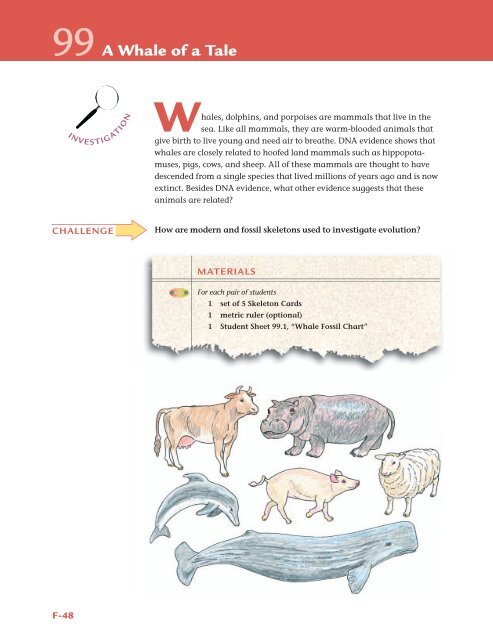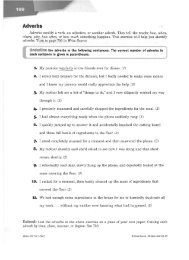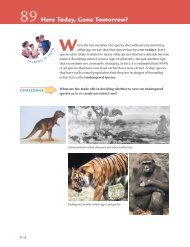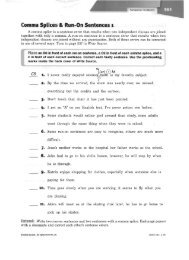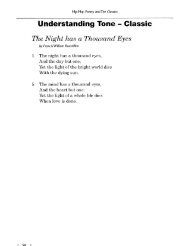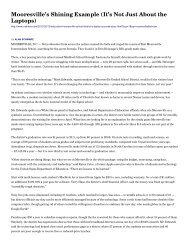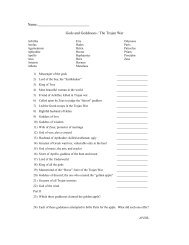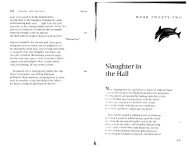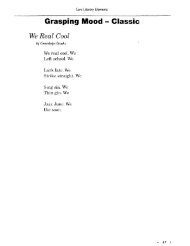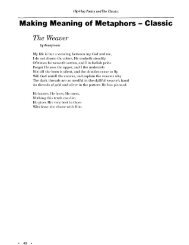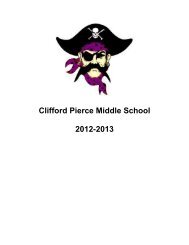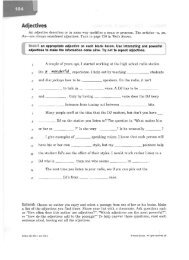Activity 99 - Merrillville Community School
Activity 99 - Merrillville Community School
Activity 99 - Merrillville Community School
Create successful ePaper yourself
Turn your PDF publications into a flip-book with our unique Google optimized e-Paper software.
<strong>99</strong><br />
A Whale of a Tale<br />
i n v e s t i g at i o n<br />
Whales, dolphins, and porpoises are mammals that live in the<br />
sea. Like all mammals, they are warm-blooded animals that<br />
give birth to live young and need air to breathe. DNA evidence shows that<br />
whales are closely related to hoofed land mammals such as hippopotamuses,<br />
pigs, cows, and sheep. All of these mammals are thought to have<br />
descended from a single species that lived millions of years ago and is now<br />
extinct. Besides DNA evidence, what other evidence suggests that these<br />
animals are related<br />
CHALLENGE<br />
How are modern and fossil skeletons used to investigate evolution<br />
Materials<br />
For each pair of students<br />
1 set of 5 Skeleton Cards<br />
1 metric ruler (optional)<br />
1 Student Sheet <strong>99</strong>.1, “Whale Fossil Chart”<br />
F-48
A Whale of a Tale • <strong>Activity</strong> <strong>99</strong><br />
The Fossil Exhibit<br />
You’ve just been hired as the assistant curator of the fossil collection<br />
of a museum. On your first day, you discover that the skeletons<br />
in the exhibit on the evolution of whales have all been moved to a<br />
new room and need to be arranged. Unfortunately, you are not a<br />
whale expert and the skeletons are not clearly labeled.<br />
A local middle school has scheduled a field trip to the museum. It is<br />
very important that you arrange the skeletons properly before the<br />
students arrive. You decide to examine them to see if you can figure<br />
out how they should be arranged.<br />
Procedure<br />
1. Compare the five Skeleton Cards. Based on similarities you observe,<br />
group the skeletons into two sets, each containing two or three cards.<br />
The set of skeletons containing Skeleton A should be called “Group 1.”<br />
The other set of skeletons will be “Group 2.”<br />
Comparing Skeletons<br />
Group 1 skeletons:<br />
A, ________<br />
Group 2 skeletons:<br />
____________<br />
Group 1 skeletons compared<br />
with Group 2 skeletons<br />
Similarities<br />
Differences<br />
2. Create a table in your science notebook like the one shown above.<br />
In the first column, record which skeletons you put in each group.<br />
3. Compare the skeletons within each group. In your table, describe and<br />
record as many similarities and differences as you can.<br />
F-49
<strong>Activity</strong> <strong>99</strong> • A Whale of a Tale<br />
4. Compare Group 1 skeletons with those of Group 2. In your table, describe<br />
and record as many similarities and differences as you can.<br />
5. It’s time to figure out how to arrange the exhibit! Use similarities and<br />
differences in the skeletons to arrange the cards in order. (While all<br />
five skeletons can be in a single line, they don’t have to be.) Record<br />
the order in which you have arranged the skeletons.<br />
Hint: Place the two least similar skeletons on either side of your desk.<br />
Then arrange the other three skeletons between them.<br />
6. You’re in luck! You discover a chart with information about the relative ages<br />
of the five skeletons. Collect Student Sheet <strong>99</strong>.1, “Whale Fossil Chart,”<br />
from your teacher.<br />
7. Compare the age data from Student Sheet <strong>99</strong>.1 with the order in which<br />
you placed the skeletons in Step 5. If necessary, rearrange your Skeleton<br />
Cards. Record your final reconstruction of the museum exhibit in your<br />
science notebook.<br />
Analysis<br />
1. a. What kinds of skeletal changes appear to have occurred during<br />
the evolution of whales<br />
b. What can you infer about the changes in habitat that occurred<br />
at the same time as these skeletal changes<br />
2. Use natural selection to explain how these changes (or one of these<br />
changes) could have occurred.<br />
3. In this activity, you examined extinct and modern whale skeletons.<br />
How does the study of these skeletons provide evidence about how<br />
species are related<br />
4. Look again at Skeleton A. This is known as an ambulocetid (am-byoolow-SEE-tid).<br />
The word ambulocetid means “walking whale.” Where do<br />
you think the ambulocetids lived Describe how you think they lived.<br />
5. Reflection: Look at your answer to Reflection Question 6 from<br />
<strong>Activity</strong> 98, “Family Histories.” Has your thinking changed<br />
Extension<br />
Find out more about current research on whale evolution. Start at the<br />
Issues and Life Science page of the SEPUP website.<br />
F-50


